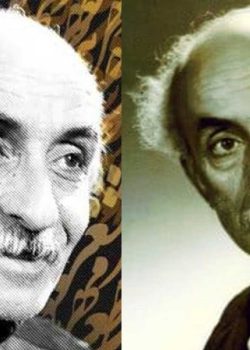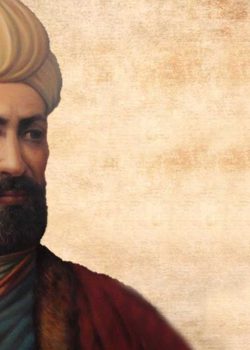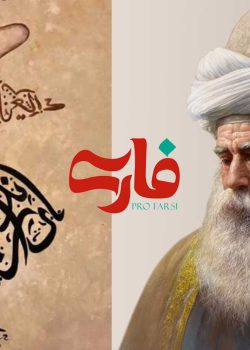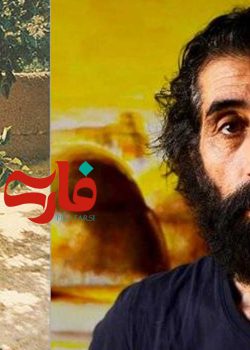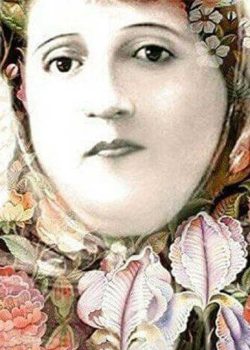Why is the shahnameh important
The Shahnameh chronicles the mythical and historical history of Iran, encompassing the creation of the world to the fall of the Sassanian Empire. Composed in elegant Persian verse, the epic narrates the heroic deeds of kings, warriors, and mythical figures like Rostam and Sohrab, illustrating themes of valor, love, loyalty, and the struggle between good and evil. As an epic that symbolizes national identity and preserves Iran’s ancient past, the Shahnameh is of paramount importance in fostering a sense of cultural continuity and pride among Iranians and is revered as one of the world’s greatest literary treasures.
What is Shahname?
Shahnameh, also known as “The Book of Kings,” is an epic poem and a masterpiece of Persian literature. It was written by the Persian poet Ferdowsi (c. 940–1020 AD) over a period of several decades. Completed around the year 1010 AD, Shahnameh is considered one of the longest epic poems ever written.

What is epic poem?
An epic poem is a lengthy narrative poem that tells the heroic or legendary story of a nation, culture, or group of people. It is one of the oldest literary forms and is typically written in an elevated or formal style, often using verse or meter. Epics are distinguished by their grand scale, heroic characters, and the portrayal of significant cultural values and historical events.

What are the Key characteristics of an epic poem?
- Length: Epic poems are usually quite long, often spanning hundreds or even thousands of lines or verses. They are intended to convey an extensive and detailed narrative.
- Heroic Characters: Epics typically feature larger-than-life protagonists who embody heroic qualities and undertake extraordinary quests or adventures. These heroes are often seen as symbols of the values and ideals of their culture.
- Divine Intervention: In many epics, the gods or supernatural beings play a significant role in the story, intervening in the lives of the characters and influencing the course of events.
- Elevated Language: Epic poems often use a formal and elevated style of language, with intricate metaphors, similes, and other poetic devices.
- Cultural Significance: Epics are essential in preserving and promoting cultural heritage, values, and historical events of a particular society or civilization.

What are the Famous examples of epic poems from different cultures?
- The Epic of Gilgamesh from ancient Mesopotamia
- The Iliad and The Odyssey, attributed to the Greek poet Homer
- The Aeneid by the Roman poet Virgil
- The Ramayana and the Mahabharata from ancient India
- Beowulf, an Old English epic poem
- Shahnameh, the Persian epic poem by Ferdowsi

Shahnameh Moral Lessons
Shahnameh, the epic poem by Ferdowsi, imparts timeless moral lessons through its rich tapestry of characters and captivating narratives. One of its core teachings is the significance of courage and honor. Throughout the epic, characters like Rostam and Gordafarid exemplify unwavering bravery, showcasing the importance of standing up for what is right and facing challenges with determination. Loyalty to one’s king, family, and country is also prominently featured, with characters like Rostam and Gordafarid displaying unwavering devotion to their rulers and principles. The poem warns against the perils of arrogance and unchecked ambition, as seen in the tragic consequences suffered by characters like Zahhak and Afrasiab. It underscores the need for humility and self-awareness to avoid the destructive path of hubris. Additionally, the power of wisdom and knowledge is celebrated, with characters like Kay Kavus and Kai Khosrow exemplifying the importance of wise leadership and decision-making. The epic also delves into the complexities of fate and destiny, reminding readers of the intricate interplay between individual agency and the inexorable forces of destiny. Shahnameh’s moral lessons extend to the transformative potential of forgiveness and compassion, as illustrated by Gordafarid’s act of mercy towards her adversary, Karim. This act leads to positive change and reconciliation, highlighting the power of forgiveness in healing wounds and fostering understanding. Overall, Shahnameh’s moral lessons resonate across time and culture, offering profound insights into the human condition and inspiring readers to embrace virtues of courage, loyalty, wisdom, and compassion in their own lives.

Who are some of the notable characters in Shahnameh?
Shahnameh, being an epic poem of significant length and scope, features a vast array of characters from various periods of Persian history, mythology, and legend. For example:
Keyumars: The first king of Persia and the mythical ancestor of the Persian people.
- Zahhak: A tyrannical king who becomes corrupted by evil and is eventually overthrown by the hero Fereydun.
- Fereydun: A legendary hero who defeats Zahhak and restores peace and justice to the land.
- Zal: The father of the great warrior Rostam and a wise and respected figure in the epic.
- Rostam: The most celebrated hero of Shahnameh, known for his extraordinary strength, bravery, and numerous heroic deeds.
- Sohrab: The valiant and tragic son of Rostam, who unknowingly faces his father in a fateful battle.
- Kai Khosrow: A wise and just king whose reign marks the end of the mythical era and the beginning of the heroic era in Shahnameh.
- Gordafarid: A brave and skilled princess and warrior, renowned for her courage and compassion.
- Afrasiab: The king of Turan and a recurring adversary of the Persians.
- Kay Kavus: A Persian king known for his adventurous spirit and curiosity, which leads him to challenging quests.
- Manuchehr: A Persian king who expands the empire and deals with various challenges during his reign.
- Siavash: The son of Kay Kavus and an honorable prince known for his integrity and tragic fate.
- Kai Khosrow II: The grandson of Kai Khosrow, who faces the Arab invasion and the fall of the Persian Empire.
- Bijan: A courageous and loyal warrior, known for his romance with Princess Manijeh.
- Gudarz: A wise and respected general and counselor, often offering sage advice to the kings.
- Farud: A fierce and skillful warrior who serves as a loyal companion to Rostam.
- Karim: The prince of Turan who leads the invasion against Persia and later changes his ways.

Why Is the Shahnameh Important?
The Shahnameh holds immense importance as a cultural and literary treasure of Persian history. As the national epic of Iran, it symbolizes the collective identity and heritage of the Persian people, providing a deep-rooted sense of cultural continuity and pride. Through its intricate narratives, the Shahnameh preserves the rich mythology, history, and values of ancient Persia, acting as a timeless repository of the Persian language and cultural heritage. Its moral and ethical lessons, exploring themes of bravery, loyalty, and compassion, have transcended time and continue to inspire readers across generations, imparting wisdom and guiding individuals towards virtuous conduct.
Furthermore, the Shahnameh’s influence extends far beyond Iran, becoming a source of fascination for people worldwide. Its poetic brilliance and captivating stories have inspired countless artists, writers, and scholars, leading to various artistic adaptations and translations in numerous languages. As a historical record blended with mythology, it offers valuable insights into ancient Persian beliefs and historical events. In essence, the Shahnameh serves as a bridge between the past and the present, celebrating the enduring spirit of Persian culture and its contribution to the global literary and artistic landscape.

Are there strong female characters, and how do they challenge traditional gender roles?
Shahnameh features strong female characters who challenge traditional gender roles of their time and showcase their strength, intelligence, and agency. Some notable strong female characters in the epic include:
- Gordafarid: As a skilled and courageous warrior, Gordafarid challenges the traditional view of women as passive and confined to domestic roles. She defies societal expectations and seeks her father’s permission to join the battlefield, proving that women are capable of valor and bravery in the face of adversity.
- Manijeh: Princess Manijeh is depicted as intelligent, eloquent, and politically astute. She plays a pivotal role in various plot developments, showcasing her agency and influence in shaping the course of events. Her strength of character and ability to navigate complex situations challenge the notion of women as mere pawns in the political landscape.
- Tahmineh: The character of Tahmineh subverts traditional gender roles by being a warrior’s lover and a brave figure in her own right. Her deep love for Rostam and her loyalty to him showcase emotional strength and the capacity of women to be devoted partners.
- Sudabeh: Queen Sudabeh is portrayed as a powerful and influential figure in the court, displaying cunning and determination to achieve her desires. While her actions may be controversial, her character defies stereotypes of passive and submissive queens.
Conclusion
Reading Shahnameh is essential for enriching our understanding of literature, culture, and human history. It serves as a gateway to Persia’s rich heritage, offering insights into mythology, history, and values through heroic characters like Rostam and Gordafarid. The epic’s moral lessons resonate across time and cultures, guiding readers towards virtuous behavior and providing timeless wisdom applicable to modern life. Moreover, as a masterpiece of Persian literature, Shahnameh showcases the elegance and beauty of the Persian language, influencing countless writers and artists worldwide. Its universal themes make it accessible and relatable to diverse audiences, connecting readers to the enduring impact of storytelling on societies and our own lives.
Read More:
Related Posts




